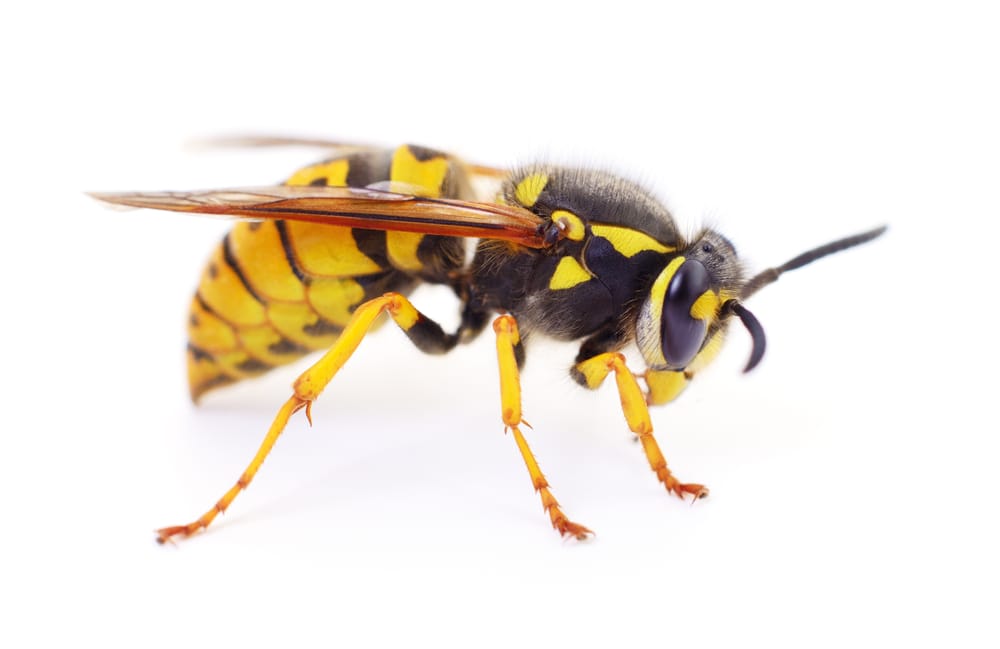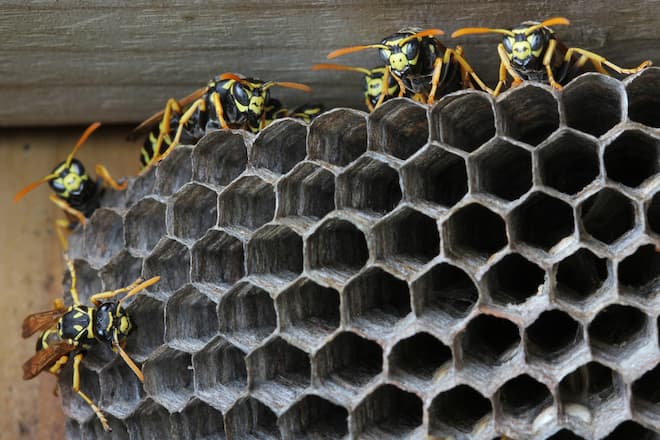Wasps are very very dangerous and should be treated by a professional. Trying to treat them yourself can result in failing to kill the nest. This will result in the wasps attacking you and unlike bees, they can sting repeatedly without dying. This can be a serious threat when doing domestic treatment especially if you are not prepared for that eventuality. Wasps can recognize human faces so they will remember you and follow you around corners, avoiding other people and obstacles and even waiting for you over water.
Wasps attack humans and animals
They will continue to attack you every time they see you and will make the situation much worse. The best option is to call an exterminator, licensed by the ministry of the environment to treat them. They will be wearing a bee suit and will be using commercial-grade pesticides to treat the nest. If they can they will remove the nest, destroy it and take it off the property. This is far more effective and often comes with a warranty. So you will not have to worry if you see them in the same area again. Professional treatments are highly effective and often get rid of the wasps that very same day allowing you to continue living your life without having to suffer another sting. Doing it on your own is a guaranteed way to get stung as most domestic treatments are highly ineffective against most types of wasp nests, especially If they are high up. Don’t take the chance of treating it yourself, call a professional.

Wasp Species
There are many types of wasps and some of them are much more dangerous than others. The Yellowjacket wasp is small and nimble and makes nests with thousands of wasps inside. These wasps can swarm you and kill you with repeated stings but are not as aggressive as some other wasps. Their life cycle is also a problem if you do not treat the nest at all and leave it to die off in the winter. The queen wasp spends the summer producing sterile female workers who take her eggs and place them in a hexagonal alcove where they leave a decapitated insect for the baby wasp to eat as it grows from a larva.
Wasp life cycle
This continues until the early fall when around august the wasp workers stop raising the other workers and are free to do as they like. This is when they attack humans for sweet foods. Most wasps follow this process though some are solitary like the mud dauber. When the fall arrives and the nest is likely to die soon the wasp queen will lay eggs of sexualized males and females. The males and females will do a mating dance so the females get pregnant and will then leave the nest to hibernate usually under tree bark. These new queens will return to your property and make new nests, usually multiple. Starting the process over again in the spring and worsening the infestation by creating more nests. This increases the danger of getting stung and also makes the treatment more expensive.


